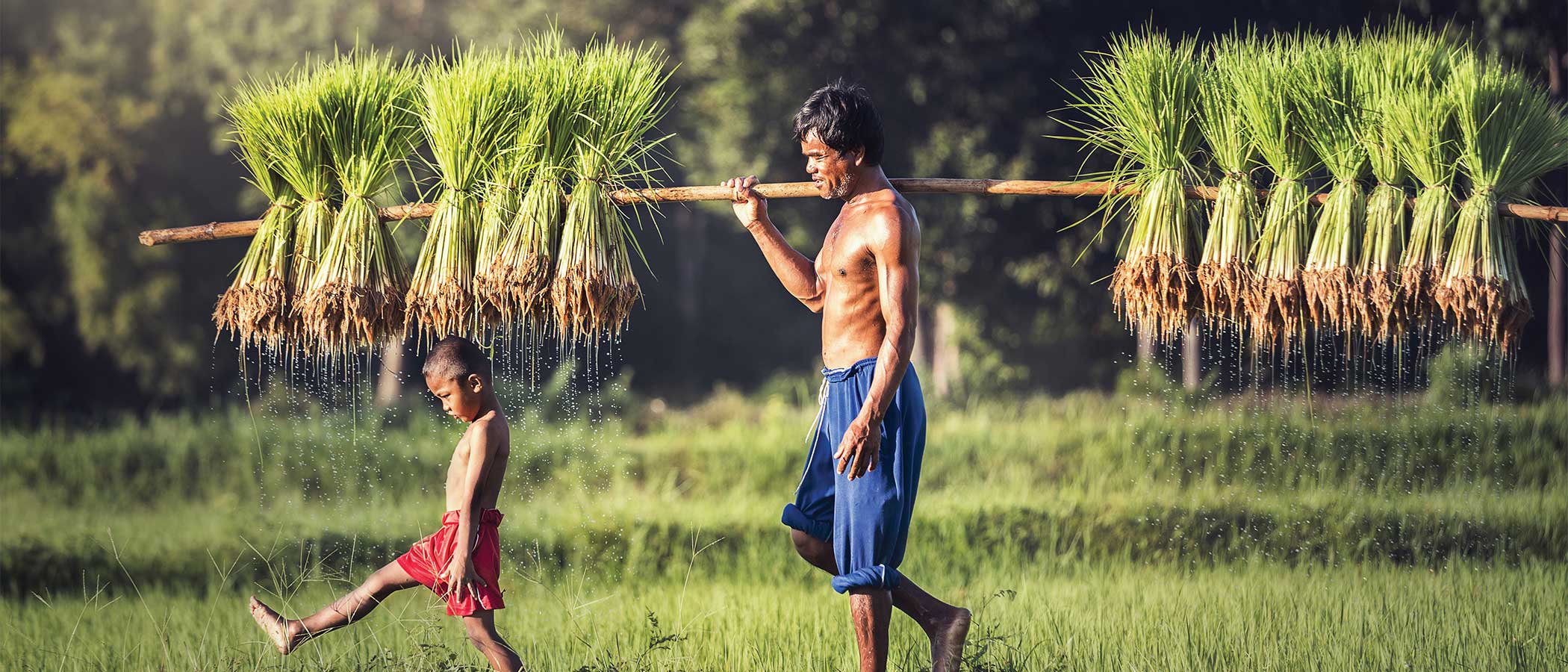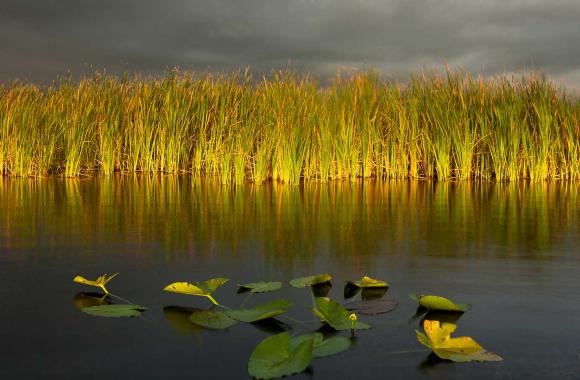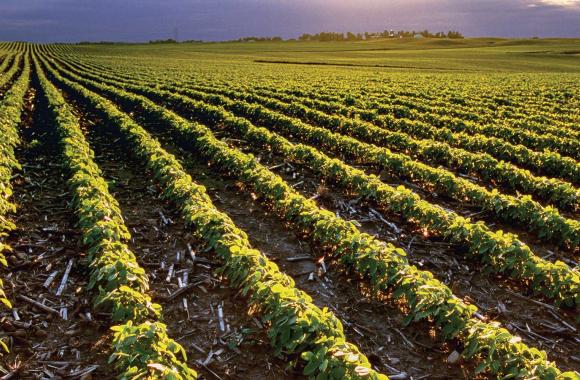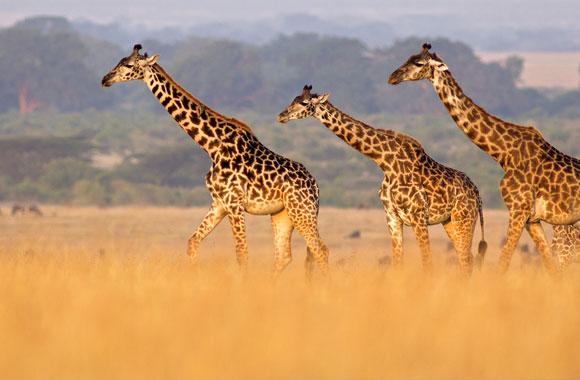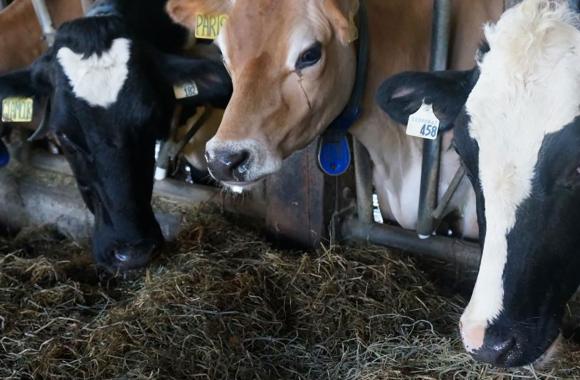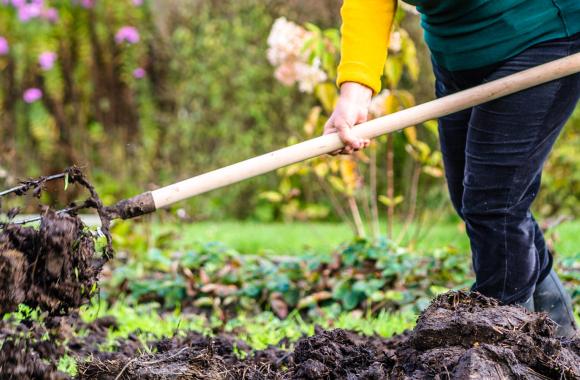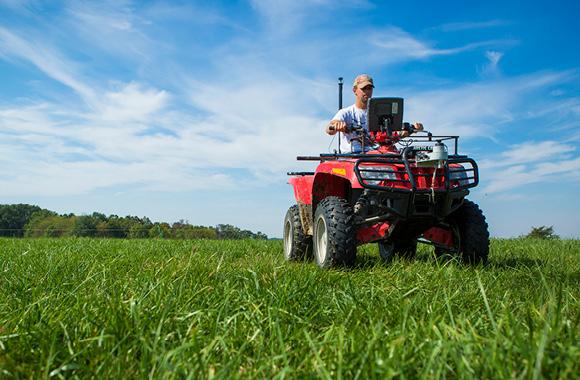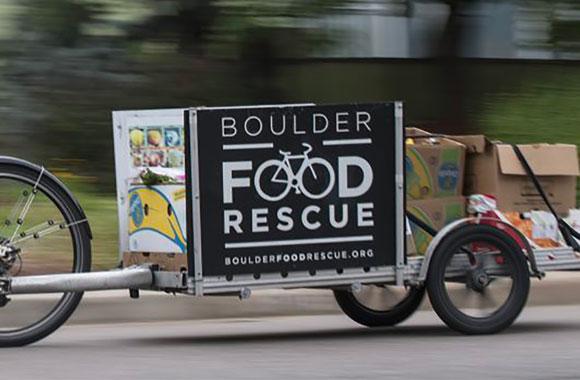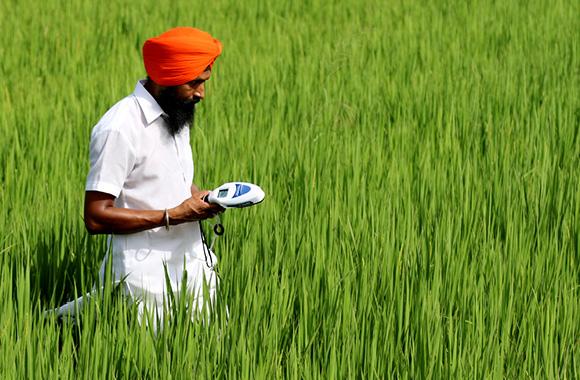Improved Rice Production
Flooded rice paddies produce large quantities of methane. Improved production techniques, including alternate wetting and drying, can reduce methane emissions and sequester carbon.
Reduced/Sequestered
2020–2050
To Implement
Operational Savings
Impact
If improved rice production grows from 41 million hectares to 93.57–110.99 million hectares over 30 years, another 9.85–14.43 gigatons of carbon dioxide equivalent emissions can be reduced. Farmers could realize US$224.70–304.49 billion in lifetime net profits and US$462.82–623.39 billion in lifetime operational savings.
Introduction
Rice is the staple food of billions of people. Its cultivation is responsible for substantial agricultural greenhouse gas emissions because flooded rice paddies are ideal anaerobic environments for methane-producing microbes that feed on decomposing organic matter. Thus, low-methane rice production techniques are sorely needed.
Project Drawdown’s Improved Rice Production solution involves a set of practices to reduce methane emissions from paddy rice production. These include:
- mid-season drainage and alternate wetting and drying
- more balanced application of nutrients
- use of rice varieties (cultivars) that are less water-loving
- seeding rice without tilling the ground.
These techniques can make rice production efficient, dependable, and sustainable, helping to meet growing demand for this staple food while minimizing adverse climate impacts.
We investigated two low-methane rice production solutions: Improved Rice Production (profiled here), with techniques suitable to both small- and large-scale operations, and System of Rice Intensification, currently limited to smallholders. This solution replaces conventional paddy rice production in mechanized (non-smallholder) regions.
Given that many rice farming methods are long-entrenched customs, change requires helping farmers see what results are possible, cultivating necessary knowledge and skills, and implementing incentives that make new methods compelling.
Methodology
Total Land Area
To evaluate the extent to which a Food, Agriculture, and Land Use sector solution can reduce greenhouse gas emissions and sequester carbon, we need to identify the total land area available for that solution in millions of hectares. To avoid double counting, we use an integration model that allocates land area among all Food, Agriculture, and Land Use sector solutions. This involves two steps. First, we classify the global land area into agro-ecological zones (AEZs) based on the land cover, soil quality and slope and assign AEZs to different thermal moisture regimes. We then classify the AEZs into “degraded” and “nondegraded.” Finally, we allocate the solutions to AEZs, with the solution most suited to a given AEZ or sets of AEZs assigned first, followed by the second-most-suited solution, and so on. Because it’s hard to predict future changes, we assume the total land area remains constant.
Total available land for improved rice production is 111 million hectares, representing non-smallholder rice production. We estimated current adoption of improved rice cultivation (defined as the amount of functional demand supplied in 2014) at 41 million hectares by interpolating the global area under "direct-seeded rice" in 1997 and 2018 (Rao et al., 2007).
Adoption Scenarios
We developed five custom adoption scenarios based on the estimation of low, medium, and high adoption rates, which in turn were based on the historical growth of direct-seeded rice and water management available reported in the literature. Some of these scenarios included peak adoption by 2030. Data were collected only from studies that used two or more of these practices: changes to water management (alternate wetting and drying), fertility management, use of aerobic cultivars, no tillage, and direct seeding.
We calculated impacts of increased adoption of improved rice production from 2020 to 2050 by comparing two growth scenarios with a reference scenario in which the market share was fixed at current levels.
- Scenario 1: Improved rice cultivation is adopted on 93.57 million hectares (84 percent of the total available land).
- Scenario 2: Improved rice cultivation is adopted on 110.99 million hectares (100 percent of the total available land).
Adoption of the solution not only mitigates greenhouse gas emissions but also saves significant amounts of irrigation water. Because improved rice cultivation has many benefits, we project aggressive adoption.
Emissions, Sequestration, and Yield Model
We set methane emissions reduction from improved rice cultivation at 5.3 metric tons of carbon dioxide equivalent per hectare per year, based on 106 data points from 16 sources. We set nitrous oxide emissions at 1.4 metric tons of carbon dioxide equivalent per hectare per year more than the reference scenario, based on 43 data points from 42 sources. We set carbon sequestration rates at 1.45 metric tons per hectare per year, based on 25 data points from three sources.
We set yield gain compared with business-as-usual annual cropping at 4.5 percent, based on meta-analysis of 78 data points from 11 sources.
Financial Model
First costs of improved rice cultivation are US$0 per hectare because the practices use existing equipment and infrastructure. We calculated net profit at US$640.07 per hectare per year for the solution (based on meta-analysis of 16 data points from six sources), compared with US$449.16 for the conventional practice (based on 33 data points from 16 sources). We calculated the operational cost at US$384.35 per hectare per year (based on 12 data points from five sources), compared with US$655.86 per year for the reference scenario (based on 28 data points from 13 sources).
Integration
Drawdown’s Agro-Ecological Zone model allocates current and projected adoption of solutions to the planet’s forest, grassland, rain-fed cropland, and irrigated cropland areas. Adoption of improved rice cultivation was the second-highest priority solution for cropland, following System of Rice Intensification.
Results
The emissions impact of Scenario 1 is 9.85 gigatons of carbon dioxide equivalent emissions by 2050. Lifetime net profit is US$224.70 billion, and net operational savings is US$462.82 billion. Adoption yields an additional 56 million metric tons of rice between 2020 and 2050.
Scenario 2 reduces emissions by 14.43 gigatons of carbon dioxide equivalent by 2050. Lifetime net profit is US$304.49 billion, and lifetime net operational savings are US$623.39. Adoption yields an additional 83 million metric tons of rice between 2020 and 2050.
Discussion
Benchmarks
The Intergovernmental Panel on Climate Change estimates emissions reduction of 0.2 gigatons of carbon dioxide equivalent per year by 2030 for rice management. Griscom et al. (2017) calculated 0.08–0.26 gigatons of carbon dioxide equivalent per year in 2030. Project Drawdown's two rice solutions combined provide 0.34–0.54 gigatons carbon dioxide equivalent per year by 2030. Our results are likely higher due to the inclusion of carbon sequestration benefits.
Limitations
It would be useful to obtain more rice production financial data points for the conventional case. Additional data on current and projected adoption would be useful as well.
Conclusions
Rice is a staple crop of critical importance, particularly in Asia. Rice production is currently a major contributor of methane emissions. Fortunately, low-methane rice production systems are ready to be scaled up. Wide adoption of these practices can have a significant impact on climate change mitigation.
References
Griscom, B. W., Adams, J., Ellis, P. W., Houghton, R. A., Lomax, G., Miteva, D. A., Schlesinger, W. H., Shoch, D., Siikamäki, J. V., Smith, P., Woodbury, P., Zganjar, C., Blackman, A., Campari, J., Conant, R. T., Delgado, C., Elias, P., Gopalakrishna, T., Hamsik, M. R., … Fargione, J. (2017). Natural climate solutions. Proceedings of the National Academy of Sciences, 114(44), 11645–11650
Rao, A. N., Johnson, D. E., Sivaprasad, B., Ladha, J. K., & Mortimer, A. M. (2007). Weed management in direct‐seeded rice. Advances in agronomy, 93, 153–255.
Smith, P. D., Martino, Z., Cai, D., Gwary, H. (2007) Climate change 2007: mitigation of climate change: contribution of Working Group III to the Fourth assessment report of the Intergovernmental Panel on Climate Change. Metz, B. (Ed.) Cambridge University Press, NU.
What You Can Do
If you are a rice farmer, adopt the practices outlined here.
If you are a rice buyer or consumer, share knowledge about climate-friendly practices with those who can use them.
- Expand your knowledge by exploring another Drawdown solution.
Co-benefits
Improving rice production increases rice yield and income for farmers.
More rice means more food security.

